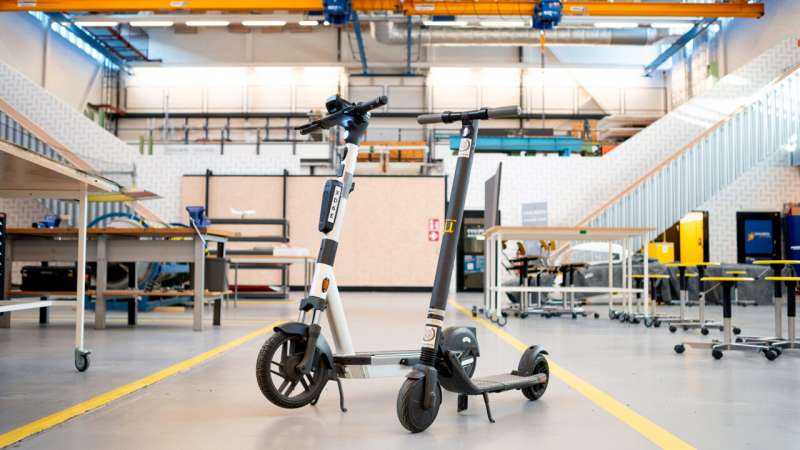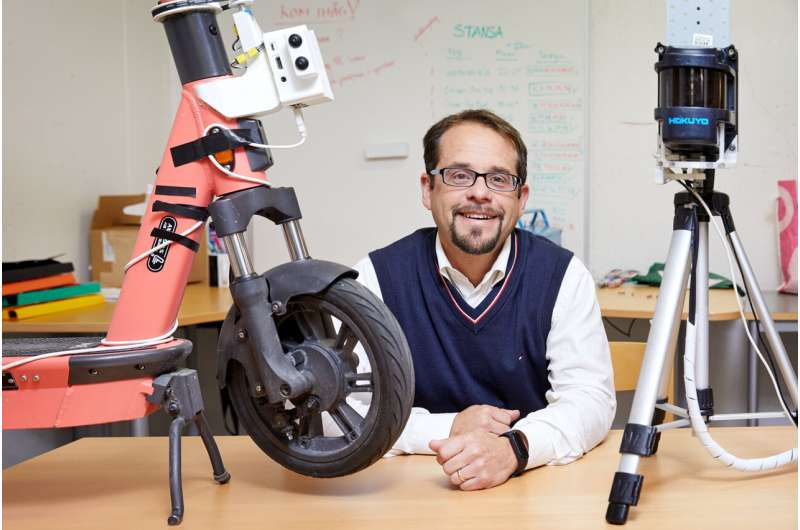This article has been reviewed according to Science X's editorial process and policies. Editors have highlighted the following attributes while ensuring the content's credibility:
fact-checked
trusted source
proofread
Why your e-scooter may pose higher risks than a rental

What we colloquially refer to as "e-scooters" can differ greatly when it comes to steering and braking capabilities, wheel size, and suspension systems; something that can have harmful consequences in the event of a crash. And it is the small, lighter e-scooters made for private use that are often more unsafe than the larger rental ones.
"Private individuals look for economical and transportable products, favoring light and foldable e-scooters that unfortunately also have the issues mentioned above," says Marco Dozza, Professor in Active Safety and Road-user Behavior at Chalmers University of Technology, Sweden, and one of the authors of a study on e-scooters.
The larger rental e-scooters available in our cities often have larger wheels, better steering and braking capabilities and better suspension systems than the smaller e-scooters available for purchase, making the rental scooters safer for crash avoidance. For many people who purchase an e-scooter, things like price, weight, and the ability to fold the scooter may matter, which can cause the consumer to buy an e-scooter that can be more dangerous to handle in critical situations than a corresponding rental variant.
In a recent study published in the Journal of Safety Research, Marco Dozza and his colleagues at Chalmers compared a large e-scooter and a light e-scooter with a bicycle (in assisted and non-assisted modes) in field trials to determine whether these new vehicles have different maneuverability constraints when avoiding a rear-end collision by braking and/or steering.
The results showed that braking performance, in terms of deceleration and jerk, varies among the different types of vehicles; specifically, e-scooters are not as effective at braking as bicycles, but the large e-scooter demonstrated better braking performance than the light one. No statistically significant difference was observed in the steering performance of the vehicles. Bicycles were perceived as more stable, maneuverable, and safe than e-scooters.
Overestimated braking ability
An individual's previous experience of riding a bike can also come to play a big role in one's ability to handle a critical situation when driving an e-scooter. There is the potential for a false sense of ability and confidence driving a seemingly similar vehicle.
"The results from the study suggest that new micromobility vehicles necessitate ad-hoc training to be safe. The fact they resemble a familiar and possibly overtrained vehicle—the bike—may trick us to believe that we know how to master them but that is not necessarily the case," says Dozza.
Personal experience creates a feeling that it is easy to ride an e-scooter, because we can transfer our balance skills directly from a bicycle to an e-scooter. When we are then faced with an emergency where we are forced to brake, the expectations we have from our previous experiences of cycling do not match. We may overestimate the braking ability of the e-scooter, something that can have disastrous consequences.
"One-third of all e-scooters crashes happen on the first ride. Our results suggest that an expectation mismatch on maneuvering performance would explain this puzzling finding that has been confirmed in multiple studies."

Safer to steer than to brake
At the same time, Dozza and his colleagues do not rule out that the heavier—and generally safer—rental scooters can cause worse accidents than the smaller ones.
"In general, when vehicles are heavier, collisions are more severe. While larger e-scooters proved to brake better, any time they collide they may cause more damage than lighter vehicles," he says. "Further, harsh braking on low-friction surfaces, like ice or wet leaves, may also destabilize a vehicle. In our trials, the tarmac was dry and smooth so we do not know if larger e-scooters would perform well in wet or icy conditions as well."
For those who find themselves in a critical situation with their e-scooter, research has shown that a steering evasive maneuver can be more effective than a braking maneuver in avoiding a collision.
"If there is space for moving aside, and braking is not enough to stop in time, steering is a better alternative," says Dozza. "Because small e-scooters suffer from longer braking distances than bikes and larger e-scooters, the situations in which steering is a better alternative than braking are more common. Unfortunately, our study shows that participants are less comfortable steering away to avoid a collision when riding an e-scooter than when riding a bicycle."
He emphasizes that it is a mistake to think of all e-scooters as the same kind of vehicle, and they are definitely not bicycles.
"The e-scooters may look alike, but their actual maneuverability, stability, and overall safety is not the same," he says.
To avoid bruises, and maybe also save lives, Dozza sends a message for all people who drive a micromobility vehicle for the first time:
"Practice braking and steering avoidance maneuvers in an empty space. Do not wait for a critical situation to happen before testing how the vehicle can brake or steer. The simplest exercise is to imagine a line on the road and try to brake as late and as close as possible to the line. Most people will overshoot, and many may be surprised by how much. Repeating this exercise a few times may already be enough to make a difference."
Besides the results mentioned above, the study provides mathematical models that describe collision avoidance maneuvers for micromobility vehicles. In a potential collision with a vehicle, these models may help the vehicle automatically brake to avoid collision. The models may also help automated vehicles planning their route in such a way that collisions with bicycles and e-scooters are easy to avoid.
More information: Tianyou Li et al, Modeling collision avoidance maneuvers for micromobility vehicles, Journal of Safety Research (2023). DOI: 10.1016/j.jsr.2023.09.019


















